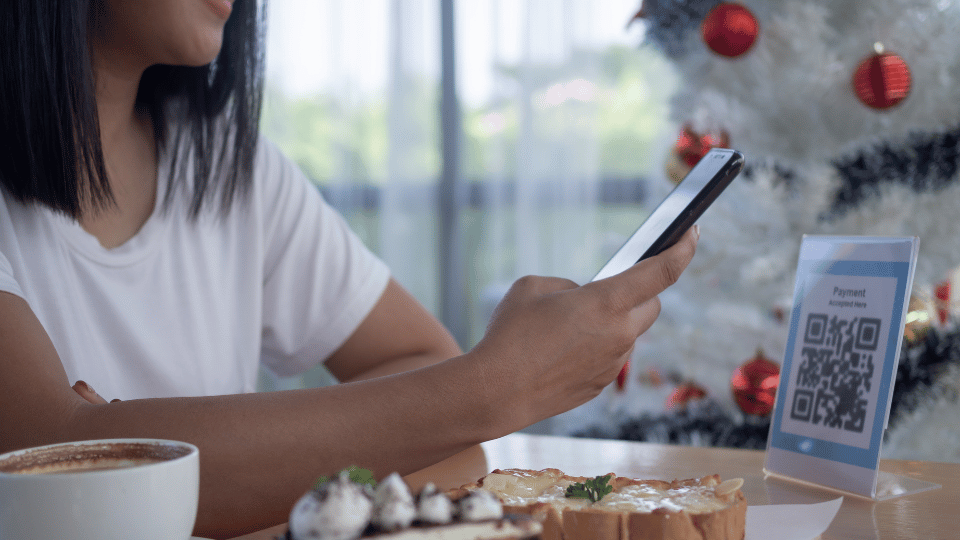Technology is changing the game in the restaurant industry, QR codes have emerged as a powerful tool, reshaping how patrons engage with menus, place orders, and settle bills. The rise of contactless solutions, accelerated by the global pandemic, has positioned QR codes at the forefront of technology adoption in the hospitality sector. However, it is crucial for restaurant operators to navigate this shift mindfully, recognising that QR codes should act as enablers, not replacements, for the personalised service and human touch that define the essence of dining.
Efficiency and Convenience: The QR Code Appeal
QR codes offer a streamlined approach to dining, providing patrons with an efficient and convenient means of accessing menus, placing orders, and making payments. The speed and ease of QR code interactions align with the modern consumer’s desire for a seamless and frictionless dining experience. The reduction of contact points and the acceleration of service cater to the growing demand for quick and efficient operations.
Empowering Customers: A Self-Service Model
The empowerment of customers is a significant facet of QR code adoption. Patrons can customise orders, split bills, and navigate their dining journey at their own pace. This self-service model resonates with a tech-savvy generation that values autonomy and quick interactions. However, the challenge lies in striking a balance that ensures customer empowerment does not compromise the personalised service that sets the hospitality industry apart.
Preserving Human Connections: The Heart of Hospitality
While QR codes contribute to efficiency, operators must not lose sight of the core values of hospitality—human connections and personalised service. The warmth of a welcoming smile, the expertise of a knowledgeable server, and the ability to cater to unique preferences are elements that QR codes cannot replicate. A successful dining experience is an intricate dance between efficient technology and the genuine hospitality provided by well-trained staff.
Avoiding Overreliance: Pitfalls and Consequences
Overreliance on QR codes, without a mindful approach, can lead to unintended consequences. Patrons may feel a sense of detachment if the human element is entirely removed from their dining experience. Celebrations, dietary restrictions, or unexpected issues that require special attention may suffer if operators solely rely on automated QR code systems. Striking the right balance is paramount to the success of this technology integration.
Striking the Harmonious Balance: Technology and Human Touch
The key is to strike a harmonious balance between the efficiency of technology and the personalised touch of human service. QR codes should be viewed as tools that enhance operations, allowing staff to focus on delivering exceptional service rather than routine tasks. By integrating technology seamlessly into the service approach, operators can create a dining experience that combines the benefits of efficiency with the irreplaceable qualities of genuine hospitality.
Staff Training: A Crucial Element
Investing in staff training is a crucial aspect of successful QR code integration. Staff should be adept at gauging when to step in and offer assistance, ensuring that customers feel attended to and valued. Empowering staff with both technological and interpersonal skills is the key to creating a dining experience that harmoniously merges efficiency with genuine hospitality. Training ensures that the staff becomes the bridge between technology and tradition.
The Future of Dining: A Thoughtful Blend
As technology continues to shape the restaurant industry, the future of dining lies in a thoughtful blend of tech-driven convenience and traditional hospitality. QR codes, when used judiciously, contribute to this balance by enabling operational efficiency without sacrificing the personalised service that defines the hospitality experience. This symbiotic relationship between technology and hospitality is the roadmap to navigating the evolving landscape.
QR Codes as Enablers, Not Replacements
In conclusion, QR codes should be embraced as enablers that enhance the overall dining journey, not as substitutes for the unique and irreplaceable qualities of human service. By recognising the symbiotic relationship between technology and hospitality, restaurant operators can navigate the evolving landscape while preserving the essence of what makes dining a truly memorable and enjoyable experience. In the journey towards tech-infused dining, QR codes should be seen as partners in innovation, enriching rather than overshadowing the cherished traditions of hospitality.
Discover the restaurant management technology toolkit you need to succeed:
Get regular news updates on NFS clients and the hospitality industry: Follow us on LinkedIn















